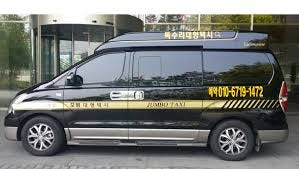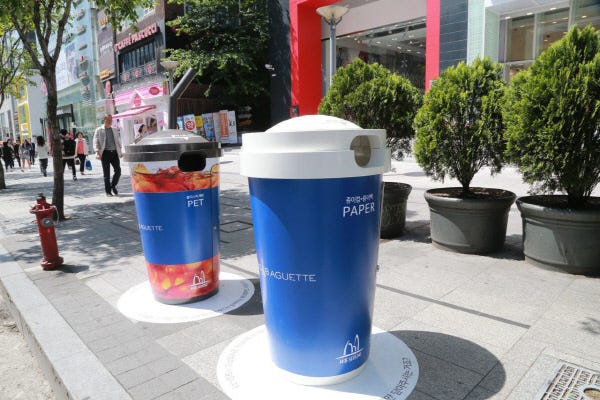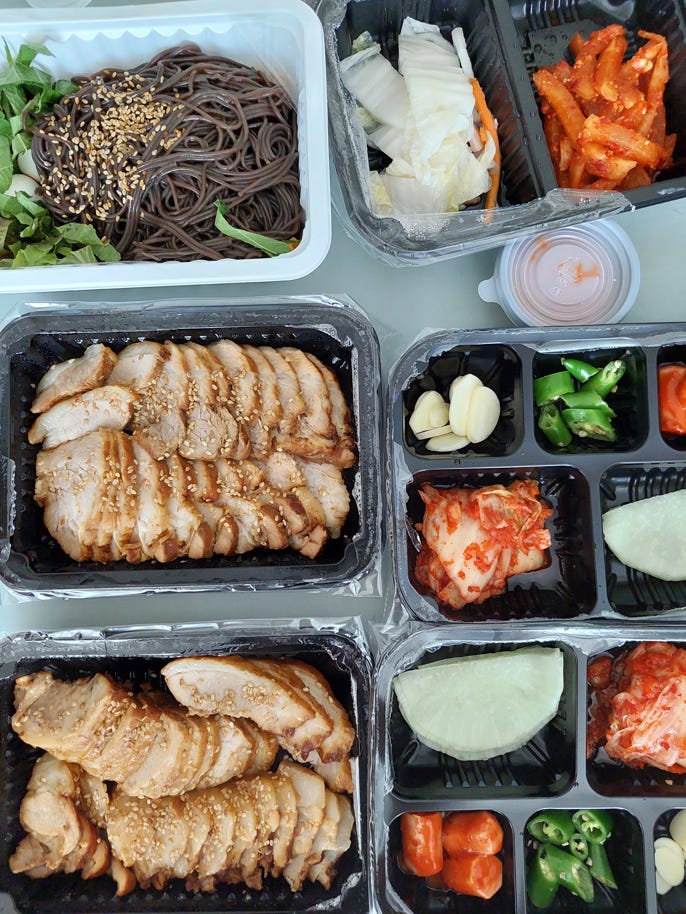My Tips on Visiting Korea, 1/n
This may be a weird time to announce my tips on visiting Korea because of all the political turmoil. To be fair to both sides, the suspended and arrested President is on impeachment trial and the leading candidate from the opposing party 이재명 is facing a trial of his own on 12 counts of serious infractions including the violation of the election law, subornation of perjury, etc.—found guilty in the lower court and the case is on the appeals court as of now.1

What a country, huh?
Gosh… I hate politicians…
The circus notwithstanding, in my opinion, all that fiasco should have no bearing on the tourism, so if you were planning a trip to Seoul, this might actually be a good time to book your tickets because everything’s on a discount. Outside of politics, it’s life as usual. My dad flew out there just a few days ago—my mom’s been in Seoul since September—and the prices were more than reasonable (surprisingly low, in fact) for the high winter season.
For the past few months, I’ve been making mental notes on what tips I could give to anyone who’s planning to visit Korea, and here they are, part I.
Q-Code
First thing you should MUST do since Jan. 1, 2025, is to complete something called the Q-Code questionnaire. It’s a simple one-page thing that basically replaces (I forget what it’s called but) the Visitor Information Card that you have to fill out on the plane.
You can’t find the app on your phone—I don’t know why. But shown here is the actual QR code to take you to it. It’ll take you 30 seconds to complete it. You will get a downloadable QR-code (why did they name it Q-code to confuse everyone, I’d never know) when you do—just show it to the Immigration officer at the Incheon Airport to save you a lot of headache and time.
From the Airport to the City
The distance is considerable. The fastest service to the city center is the AREX (Airport Express) train, but if your hotel is not in downtown, it’s useless. If your destination is in Gangnam area, for example, the direct Airport Limousine service or Seoul Air Bus line number 6009 or 6020 would be your best bet. Depending on the traffic, it will be a 60-to-90-minute ride.
BUT!! If you’re traveling as a family of 3 or more, you might consider alternatives like a premium taxi that’s lined up in front of the airport. The bus fare for one person is 17,000 or 18,000 KRW whereas the cab fare will be about 80,000~100,000 KRW. Or, you can use the Klook website (like I have for the past 2 trips—very satisfied) to book a private pickup service ($50~60) that’s quite cheaper than the premium taxi. If you have 4 people in your party, the private pickup service will actually be cheaper than the airport bus.
The Local Metro Buses
Get to know your metro bus routes as much as you can beforehand. My preferred mode of getting around Seoul had always been the subway because there were no traffic jams but my opinion on the bus system changed drastically last summer. The city-wide dedicated bus lanes are the main reason why. Ridiculous traffic jams on the surface roads, at least for the buses, are a thing of the past and the added bonus is that you get to see the scenery.

For example, my kids and I wanted to visit Yonsei University campus from Gangnam one day. The Green subway line (2nd line) would have taken us to Shinchon Station without having to transfer in about 45 minutes, but you would have to walk another 10 minutes to get to the campus (during sweltering heat). But there was a bus line (No. 470) that took us to the front gate of the university from Gangnam. And we traveled through downtown Seoul to get us extra scenery that we never would have experienced otherwise.
Trash Receptacles
This was in the summer of 2018. My three kids and I were on our way to the COEX mall from Gangnam Station and we happened to be walking right behind an American family of 5, speaking in mild southern drawl. I overheard the mom saying something that stuck with me after all these years because I hadn’t noticed it before but was true.
This country has everything, except for trash cans.
Don’t expect to find trash receptacles easily. Think twice about carrying drinks around while walking. It has to do with the national anal retentiveness on proper trash disposal.
Old Men and Ladies
This is a sensitive point for me to bring up because most are gentle, law-abiding, humble, respectable people, but you have to beware of some old men and ladies, especially when you’re in and around traditional markets and subway stations. They will cut in line, push you and bump into you like it’s nothing. When you do experience this, please don’t get offended. They do that to everyone, and I mean, everyone.
Renting Cars
You shouldn’t be afraid of renting a car as I was, especially if you’re traveling with your family or small group. Now that I’ve done it a couple of times, I would not hesitate for a second to do it again when I’m in Seoul. The rate’s reasonable (less than $50 per day including full insurance) and the navigation system comes with English AI that’s pretty damned good (yes, I tested it).
The street signs are intuitive and similar to that of the American road signs. It shouldn’t be too much of a problem although I’ve included this link for you to review them if you’re going to drive in Korea.
The one sign that I had trouble with was this— “비보호” left turn sign next to the traffic signals. The word means, “Not Protected.” That’s where I got confused, but here is what it means—yes you CAN turn left on green (NEVER on red) if there is NO oncoming car from the opposite direction and you’re not putting anyone in danger. I got honked at a couple of times by drivers behind me when I wasn’t moving.
Driving on the Expressway (고속도로)
There are no “free”ways in Korea. All expressways are tolled. The toll from Seoul to Busan (from one corner of Korea to the other) was about 19,000 KRW (~$14), I think. Most Korean drivers have transponders installed in their cars so that they can use this “hi-pass” entrances at toll gates without stopping.
But obviously, I didn’t have one in my rental car. It turns out, as the rental car office employee kindly explained to me, that you can use the “cash” lane. Or, some toll gates don’t have that option, especially when you’re in the countryside. Don’t worry or panic, even if you’re in the wrong lane. Just go through—the transponder at the toll gate will read your license plate and will charge the credit card that you’ve used in renting your car, WITHOUT any penalties or extra fees.2 So, relax and enjoy the drive.
If You’re a 교포…
This is sort of spitting on my own face—but if you’re a Korean-American or Korean-(country of your residence), they expect you to know everything about Korean laws and systems of payment and other idiosyncrasies.
It’s almost like a reverse discrimination in that you won’t get the same help and/or guidance as the other foreign tourists. Maybe I’ll have a separate posting on why that might be, but for a while in Korea, 교포s were viewed as pariah (not anymore, I don’t think).
Frankly, I don’t know what to tell you when you run into this situation.
Ordering Delivery Food
This saved the day for me during my last trip in summer. Like I have mentioned before in my previous postings, it really is a huge pain in the ass or mostly just impossible using my American Visa card when ordering/purchasing things online.
After wrestling with a few websites and payment systems for a couple of hours (and a lot of swearing, I might add) on two consecutive days, I was able to finally figure it out. Ugh, what an ordeal that was.
First off, there are a few food delivery ordering apps but something called Baemin dominates the market. There has been a brewing friction between the users of the app and the app maker because of the recently instituted “delivery fee.” By now you should know that you do NOT leave tips at restaurants in Korea. It’s just the way it is over there. Thus, when Baemin brought in a modest delivery fee, people were all up in arms. And the fee wasn’t like $10. It’s around $1.50 to $2.00 range. Not ridiculous—in fact, more than reasonable. But that does NOT sit well with Korean natives. No problem for me.
Search “Baemin” in your app store and install it. The big problem for a lot of you will be that the app is in Korean language only.
*** I will put up a sort of addendum to this post in a few days—something that will guide you step by step on how to use the app. I’m going to order delivery for my parents in Seoul and capture all the screenshots. In the meanwhile, it’d be best if you can study some Korean words.
The best thing about it is, you don’t need a Korean phone number and you can use your foreign credit cards!! But you can’t “create account” and start earning points.
Using Korean Taxi Cabs
From time to time, you will have to catch a taxi. The fare is considerably lower in Seoul than major international cities, especially in comparison to Tokyo (I was shocked!).
In the above screenshot of my phone, you see the “Kakao T” app directly under the “Baemin” app. Rideshare companies like Uber and Lyft are not present in Korea—they weren’t granted license to operate. Enter Kakao Taxi, a cab hailing service.
The app was installed in English and I used it a few times while I was in Seoul and Busan with no problems at all. And now they have a separate app for foreigners (from the same company). The rating for the app is very high, like 4.7, so I reckon it’s very easy to use. Something for you to keep in mind.
Just for reference, a 20~25 minute cab ride will be about 12,000~14,000 KRW (less than $10 USD).
I’ll put up more information if you have any other questions and/or I think of other things that I missed.
If again found guilty, he will not be able to run for public office for the next 10 years.
This really happened to me last summer. I got off the expressway at a small countryside toll gate to get to my hometown and there was no cashier—just one automated lane. I momentarily froze, not knowing what to do but obviously had to drive through. When I returned the car 2 days later, there it was on the receipt—toll gate charge without any penalties.













